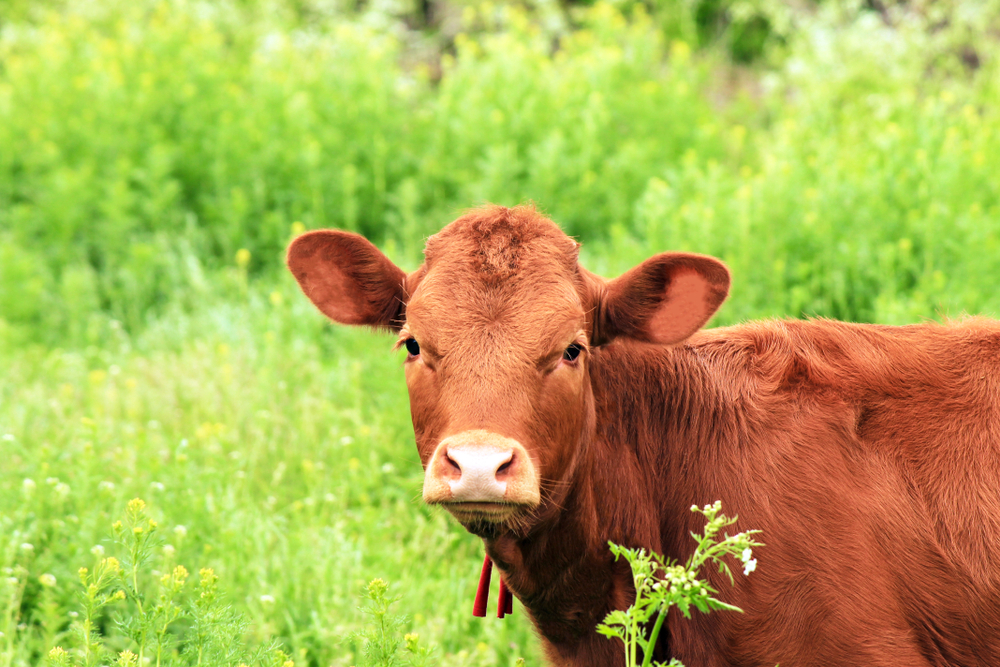An Oorah Holiday Guide
Oorah’s “10 Minute” guides are designed to help you “find your way around” the Yomim Tovim that mark the Jewish year. Our heritage is rich with traditions, rituals and special prayers that unite us with Jews throughout the centuries and throughout the world. But most importantly, they provide us with meaningful ways to become better connected to our own souls, our Torah, and of course, to G-d.
We hope you will find the information provided within these pages to be helpful and enlightening. Use it to enhance your experience of the Jewish holidays, and to give your family a sweet, authentic taste of the beautiful tradition that is every Jewish child’s birthright!
The When and Why of Sukkos (Sukkot)
To someone who is not familiar with Jewish tradition, a ride through an observant Jewish neighborhood this time of year would be a source of bewilderment. Why are all these otherwise sane people putting up little huts (sukkahs) in their yards? Why are they finishing the huts off with roofs made of bamboo sticks that are incapable of keeping out the rain? Sukkos, of the Jewish holidays, is certainly among the most noticeable. It is rich in ritual and sensory experiences, but most of all, it is the joyful culmination of the solemn month of Tishrei.
After the Day of Judgment, the Ten Days of Repentance and the Day of Atonement, the Jewish people have cast off the sins and burdens of the year gone by. Pure and clean, their feeling of closeness to G-d is at a peak, and for this reason, Sukkos alone is known as “z’man “ simchaseinu – the time of our rejoicing.”
Dates
Sukkos begins on the 15th of the Hebrew month of Tishrei. As on all Jewish holidays, candles are lit and the holiday is observed starting before sundown of the night before. To find out the corresponding dates on the solar calendar and for candlelighting times, consult a Jewish calendar or check a website such as www.ou.org/holidays/calendar.
The Torah designates seven days for the festival of Sukkos. The additional day of Shemini Atzeres extends the festival to eight days. In Israel, Sukkos is still celebrated for eight days, but in the Diaspora, it lasts nine days. The first two and last two days are considered full holidays (Yomim Tovim) during which observant Jews abstain from work in a manner similar to Shabbos. Only certain labors (mainly regarding preparation of food) are permitted.
In the Diaspora, the last two days are celebrated as separate holidays. The eighth day is Shemini Atzeres and the ninth day is Simchas Torah. In Israel, the eighth day encompasses both of these holidays. The intermediate days of the week are called Chol Hamoed. They are still part of the festival, but driving, using electricity, spending money and some other types of work are permitted.
The Sukkah
The hut people build to celebrate Sukkos is known as a sukkah. It may be made of canvas, wood, fiberglass or whatever fits the parameters of Jewish law: it must be a temporary structure, yet sturdy enough to withstand the wind. The covering or schach must be made of plants that are neither food, nor fashioned into implements or building materials. It must be detached from the ground and it may not be nailed down. It should provide ample shade. Bamboo poles and evergreen branches are popular choices. Bamboo mats may be used if they are manufactured with rabbinical supervision.
The sukkah embodies many concepts. One concept is the protection that G-d provided the Jews in the desert. With no trees to shade them, they would surely have perished under the fierce sun had G-d not sheltered them. The Sages of the Talmud teach that this protection came in the form of “Clouds of Glory,” which provided a ceiling and walls around the Jewish people to protect them against the heat. The sukkah symbolizes these clouds.
When the Jewish people leave their sturdy houses to eat and sleep in the sukkah, they are strengthening their trust in G-d. With only the walls and the leaky roof to protect them, they are demonstrating that they understand that G-d is their real shelter. Sukkos is the time to take a little vacation from our belongings and “stuff,” and just live simply under G-d’s sky.
Another concept which the sukkah symbolizes is the gift of G-d’s bounty. Sukkos occurs at the end of the harvest season in Israel. In fact, one of the names of Sukkos is Chag Ha’assif, the Festival of Gathering. When the Jewish farmers harvested their crops, they would stay overnight in the fields in small booths, called sukkahs, so that they could complete the harvest quickly.
In The Torah
Dwelling in a sukkah for seven days is a mitzvah whose source is in the Torah (Leviticus 23:42): “You shall dwell in sukkahs for seven days; every inhabitant of Israel shall dwell in sukkahs in order that your generation shall know that I caused the Jews to dwell in sukkahs when I brought them out of Egypt. I am the Lord your G-d.”
The word “dwell” refers to eating and sleeping. The Torah does not require a person to stay in the sukkah if he is uncomfortable. The nighttime chill may absolve people of the requirement to sleep in the sukkah. Women are not required to eat in the sukkah, but most women do.
The Four Species
The other hallmark of the Sukkos celebration is the “taking of the Four Species.” This is often called “lulav (palm branch) and esrog (citron),” even though there are two other species involved – the hadass (myrtle branch) and arava (willow branch). The three types of branches are bound together in a special binder, and held together in one’s right hand while the left holds the citron. A blessing is said, and the Four Species are lifted and waved in six directions – up, down, left, right, front, and back. The Torah obligation of this ritual is contained in the words of Leviticus (23:40): “On the first day you shall take for yourselves a beautiful tree, fruit, branches of palm trees and boughs of thick-leaved trees and willows of the brook, and you shall rejoice before the Lord, your G-d, for seven days.”
The esrog gets the most attention of this mitzvah. People go to great expense and effort to procure an esrog that is particularly beautiful: even in shape and color, without spots or damage. While every mitzvah is enhanced by trying to do it in the most beautiful, dignified way possible, only in the case of the esrog is this enhancement part of the mitzvah itself.
The lulav is a young branch of a date palm. It is selected for its color, freshness, straightness and the intact point of its tip.
The hadass has leaves that are shaped like a human eye. The leaves must be arranged in groups of three from the top to the bottom of the branch, and three branches are required.
The arava should have long, slender green leaves with fresh, straight branches. Two aravos are needed for the mitzvah.
One must own the set of Four Species to fulfill the mitzvah. All the species should be fresh. If any of them are dried out it may disqualify the set. If the tip of one of the four is removed, it can disqualify the set as well.
A Medrash (ancient commentary) on the mitzvah of the Four Species compares each element to a part of the human body. The esrog is the heart, the lulav is the spine, the hadass is the eye and the arava is the lips. These are all bound together to serve G-d.
In addition, these various species, which vary in their possession of taste and fragrance, demonstrate the unity of the Jewish people. Taking them together represents different qualities of people. The esrog which provides both food and fragrance represents those who are both learned and accomplished in terms of mitzvos. The lulav provides dates but does not have a fragrance. It represents those who possess Torah knowledge, but not mitzvos. The fragrant but tasteless hadass represents those who perform mitzvos, but are poor in Torah knowledge. The aravos lack both food value and fragrance. They represent people empty of both Torah and mitzvos. All types – the wise and the ignorant, the kind-hearted and the selfish – are an essential part of one inseparable nation and must unite if they are all to merit continued existence.
The blessing of the Four Species is recited every day except for Shabbos. They are also taken to synagogue each day of Sukkos, where they are shaken before and during Hallel, an extra Yom Tov service comprising praises to G-d, and are carried around the bimah (platform upon which the Torah is read) in a procession.
Simchas Beis HaShoeiva
In the times of the Holy Temple, the Jewish People flocked to Jerusalem for the three pilgrimage festivals – Sukkos, Pesach and Shavuos. During the week of Sukkos, a special ceremony accompanied the sacrifices; it was known as the “water libation,” and it consisted of specially drawn water being poured on the altar.
The water for this ceremony was drawn from the stream called Siloam, where the Jewish kings were anointed. The drawing of this water was the occasion for festivities that lasted throughout the night until sunrise the next day. The most revered and dignified Torah scholars would dance, juggle torches and celebrate amid the throngs of people gathered in the Temple courtyard. The Levites would sing and play instruments, and the event would culminate with the Kohanim (priests) blowing shofars. So exultant was this annual event that it says in the Talmud that one who has not seen the Simchas Beis Hashoeiva has never seen rejoicing in his life.
Today, many shuls, yeshivos and Jewish groups remember this special time of joy by having their own Simchas Beis Hashoeiva. Although the essential element of the Temple and the water drawing are not available to us in the present times, the singing, dancing, food and drink still succeed in rousing the season’s joy in every Jewish heart. (Find out about Oorah’s Simchas Beis Hashoeiva by calling 732-730-1000 x 188 or going online to www.oorah.org.)
Hoshana Rabba
The seventh day of Sukkos is called Hoshana Rabba. This is the last day in which the lulav and esrog are taken.
In the synagogue, the lulav and esrog are carried around the bimah seven times. Then prayers called Hoshanos (supplications for G-d’s help) are recited, and each person beats aravos (willow branches) against the floor five times. This is said to ease any severe judgment that may have been decreed. However, since this is just a custom, not a mitzvah, no blessing is recited.
There is also a sense of solemnity on Hoshana Rabba, because it is the day in which the final judgment for water and crops is sealed for the year. Since human life and prosperity depend on these gifts, there are special prayers and a theme of repentance in the prayers on this day.
Shemini Atzeres
Although the Torah specifically commands us to dwell in the sukkah for seven days, there is an additional day added onto the end of the Yom Tov, called Shemimi Atzeres (The Eighth Day of Assembly). The purpose of this day can be explained with the following parable: A man enjoyed the company of all his friends and family at the wedding banquet he made for his child. When it was over, he spent some time with his immediate family at a small meal where he could enjoy their intimate company. So, too, the Jews brought sacrifices over the entire Sukkos festival for all the gentile nations. After the festival, G-d longs for the company of the Jewish people on their own. A special sacrifice was brought which is on behalf of the Jewish people alone.
Simchas Torah
The final climactic day of the Sukkos festival is Simchas Torah, which means “rejoicing with the Torah.” During the evening prayers at the outset of this holiday, people flock to synagogue to sing and dance with the Torah scrolls. Members of the congregation are given the honor of removing the scrolls from the ark and carrying them in a procession around the bimah (platform upon which the Torah is read).
As they circle around, the congregation recites verses asking G-d to help us and save us from troubles. Then the rejoicing begins. The congregation spontaneously sings many songs celebrating the great gift of Torah and the blessing of being the people to whom G-d gave the Torah. Circles form around those who are holding Torah scrolls and everyone dances with them and around them. Children are carried on their fathers’ shoulders, and there is usually abundant candy and drinks to keep them going.
This procedure is repeated seven times. Each time is called a hakafah. The next morning, the hakafos are performed again. The reason the Torah is shown such love on this day is because it is the day on which the final portion of the Torah is read. The reader begins the cycle of Torah reading anew with the first portion of Genesis (Bereishis), detailing G-d’s creation of the world. By beginning again as soon as the last Torah reading is finished, the Jewish people demonstrate that the Torah is always on their tongues, and that they are never finished learning from it. It is a day for Jews to thank G-d for His most precious gift – the Torah – which makes us who we are as a nation.
A Little Inspiration
The Grace After Meals recited on holidays contains various additions appropriate to each holiday. The addition for Sukkos adds the words “The Merciful One will raise for us the fallen sukkah of David.” This refers to the Holy Temple and to the future redemption of the Jewish people.
Notably, though, the phrase does not refer to the “destroyed” sukkah of David, but rather, the “fallen” sukkah, even though we commonly describe the Temple as having been destroyed. One interpretation of this choice of words is that like the sukkah, which is assembled and then taken down and stored away until the time arrives for its rebuilding, the Holy Temple, too, awaits its time. It is not destroyed, but merely “fallen.” All that is needed to rebuild it is in our hands. We wait only for us to merit its being rebuilt.



Bat-Sheva Pomerantz
says:Ditto the above message, many thanks to all who do all they do to help others learn what they missed while growing up in a non religious environment 😊
Sylvia Proger
says:You answered all my questions, all my “now I know why”. Thank you.
Cindy Grundman Andreatos
says:Thank you
Rachel
says:Thank you for this! I learned a lot.
Anonymous
says:I appreciate you spending some time and energy to put this content together.